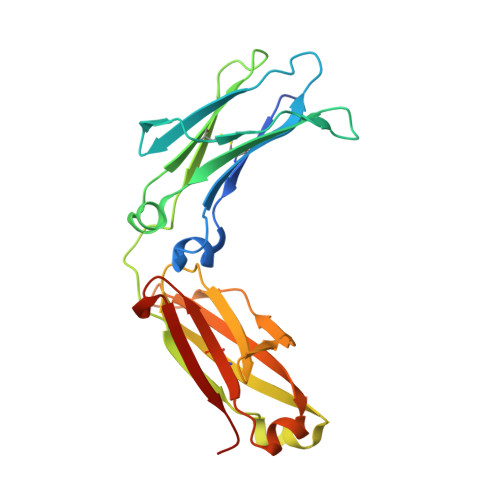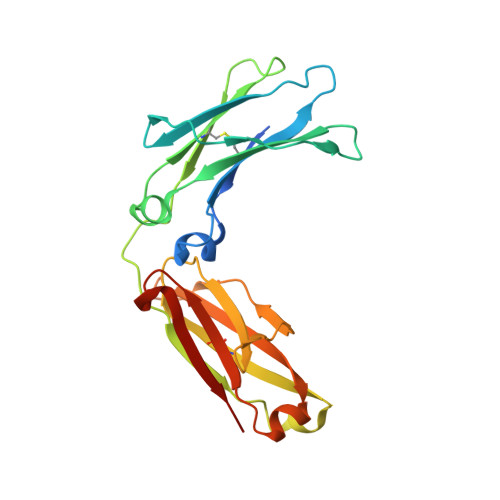Generating Bispecific Human IgG1 and IgG2 Antibodies from Any Antibody Pair.
Strop, P., Ho, W.H., Boustany, L.M., Abdiche, Y.N., Lindquist, K.C., Farias, S.E., Rickert, M., Appah, C.T., Pascua, E., Radcliffe, T., Sutton, J., Chaparro-Riggers, J., Chen, W., Casas, M.G., Chin, S.M., Wong, O.K., Liu, S.H., Vergara, G., Shelton, D., Rajpal, A., Pons, J.(2012) J Mol Biol 420: 204-219
- PubMed: 22543237
- DOI: https://doi.org/10.1016/j.jmb.2012.04.020
- Primary Citation of Related Structures:
4DZ8 - PubMed Abstract:
Bispecific antibodies and antibody fragments are a new class of therapeutics increasingly utilized in the clinic for T cell recruitment (catumaxomab anti-EpCAM/CD3 and blinatumomab anti-CD19/CD3), increase in the selectivity of targeting, or simultaneous modulation of multiple cellular pathways. While the clinical potential for certain bispecific antibody formats is clear, progress has been hindered because they are often difficult to manufacture, may suffer from suboptimal pharmacokinetic properties, and may be limited due to potential immunogenicity issues. Current state-of-the-art human IgG-like bispecific technologies require co-expression of two heavy chains with a single light chain, use crossover domains to segregate light chains, or utilize scFv (single-chain fragment variable)-Fc fusion. We have engineered both human IgG1 and IgG2 subtypes, with minimal point mutations, to form full-length bispecific human antibodies with high efficiency and in high purity. In our system, the two antibodies of interest can be expressed and purified separately, mixed together under appropriate redox conditions, resulting in a formation of a stable bispecific antibody with high yields. With this approach, it is not necessary to generate new antibodies that share a common light chain, therefore allowing the immediate use of an existing antibody regardless of whether it has been generated via standard hybridoma or display methods. We demonstrate the generality of the approach and show that these bispecific antibodies have properties similar to those of wild-type IgGs, and we further demonstrate the utility of the technology with an example of a CD3/CD20 bispecific antibody that effectively depletes B cells in vitro and in vivo.
Organizational Affiliation:
Rinat-Pfizer Inc., 230 East Grand Avenue, South San Francisco, CA 94080, USA.
















